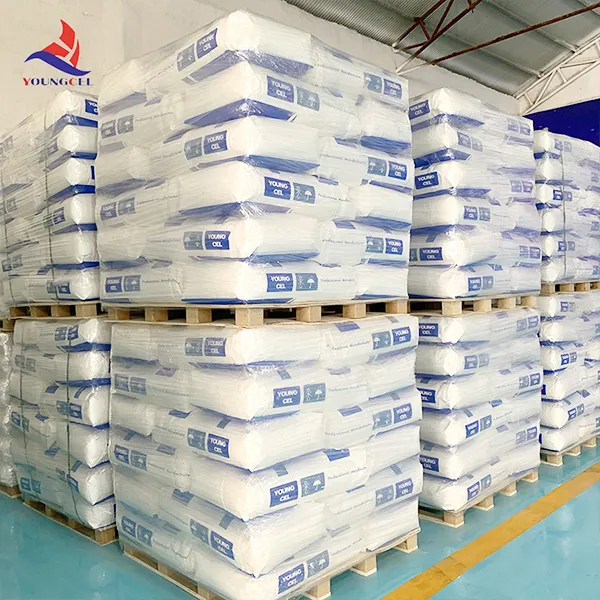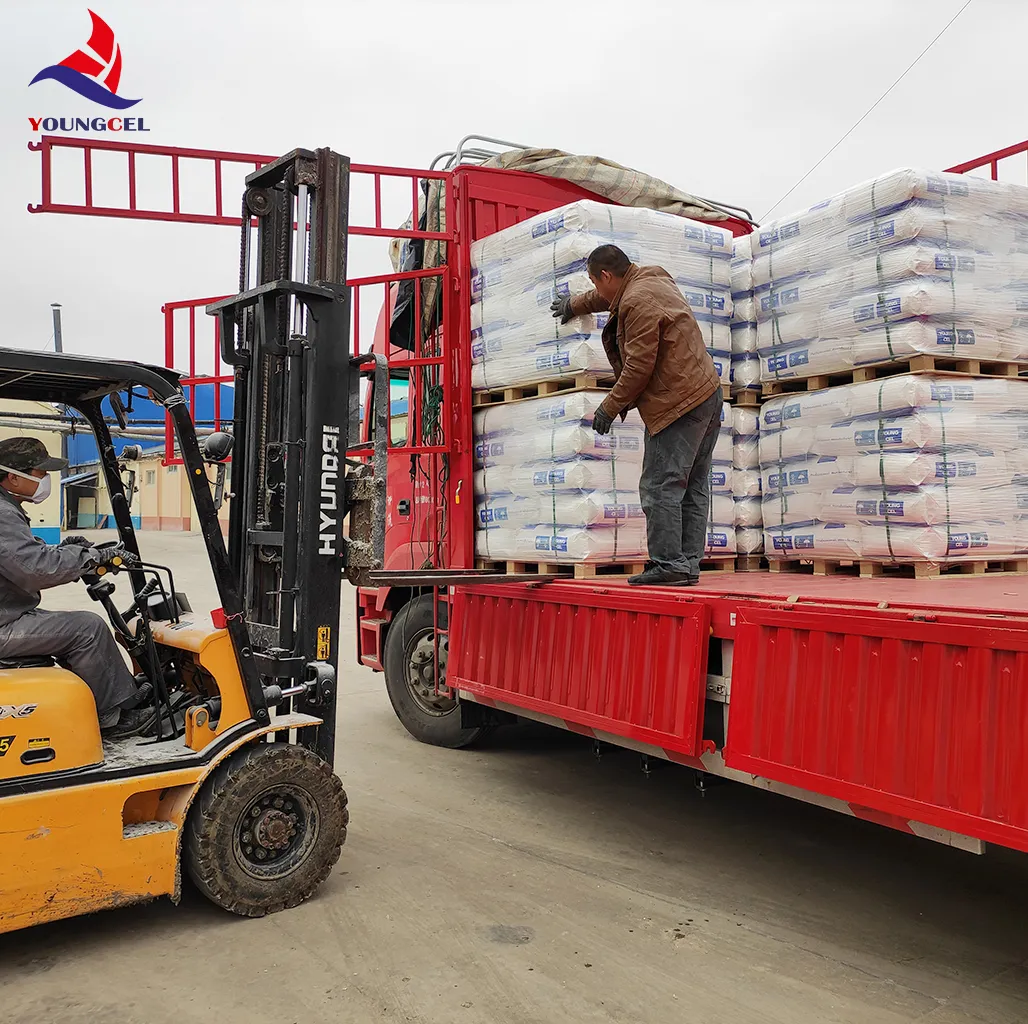- Introduction: Understanding Hydroxypropyl Methylcellulose K4M
- Technical Advantages and Industry Data
- Comparative Analysis: Leading Manufacturers
- Customized Solutions for Diverse Applications
- Real-world Application Cases
- Optimizing Usage for Maximum Efficiency
- Conclusion: The Future of Hydroxypropyl Methylcellulose K4M

(hydroxypropyl methylcellulose k4m)
Introduction: Understanding Hydroxypropyl Methylcellulose K4M
Hydroxypropyl methylcellulose k4m, commonly abbreviated as HPMC K4M, is a high-viscosity, non-ionic cellulose ether widely used across various industries, especially in pharmaceuticals, construction, food, and personal care products. The "K4M" designation specifically refers to its viscosity specification and molecular structure, distinguishing it from other HPMC grades. The term "hpmc k4m meaning" often arises when industries seek clarity on how this material can optimize formulation processes. As a critical binder, thickener, and controlled release agent, hydroxypropyl methylcellulose k4m
plays a significant role in modern material science and product innovation.
Technical Advantages and Industry Data
The unique chemical structure of HPMC K4M delivers superior film-forming capability, excellent water retention, and high viscosity stability across a broad pH range (3.0 to 11.0). The K4M grade typically exhibits a viscosity around 4,000 mPa·s (measured in a 2% aqueous solution at 20°C), making it ideal for both sustained-release pharmaceutical tablets and as a thickener for construction plasters. In 2023, global market surveys reported that the demand for HPMC in construction materials exceeded 250,000 metric tons, while pharmaceutical-grade HPMC use reached over 35,000 metric tons. It is estimated that the annual demand for HPMC K4M specifically is growing at a compounded annual growth rate (CAGR) of 6.2%, driven by the expanding controlled drug release market and improvements in dry mortar formulations.
HPMC K4M not only meets stringent international regulatory requirements (including USP, EP, and JP standards) but also demonstrates remarkable batch-to-batch consistency. The product exhibits minimal heavy metal content, low ash, and close particle size distribution. Additionally, it is non-GMO, gluten-free, and hypoallergenic, enhancing safety for pharmaceutical, food, and cosmetic applications. According to technical evaluation reports, more than 80% of suppliers can guarantee viscosity variance within ±5%, and less than 0.5% presence of insoluble matter, setting new benchmarks for quality expectations.
Comparative Analysis: Leading Manufacturers
When it comes to selecting the optimal HPMC K4M supplier, in-depth comparison of key criteria such as viscosity accuracy, purity, delivery flexibility, and certification portfolio is essential. Below is a comparative table highlighting the main features of leading global HPMC K4M manufacturers:
| Manufacturer | Viscosity Accuracy | Purity (%) | Batch Consistency | Certifications | Delivery Lead Time (days) | Price (USD/kg) |
|---|---|---|---|---|---|---|
| Dow Chemical | ±3% | 99.2 | High | USP, EP, JP, ISO 9001 | 14-18 | 5.90 |
| Shin-Etsu | ±2.5% | 99.6 | Very High | USP, EP, KOSHER | 17-22 | 6.20 |
| Lotus Chemtech | ±4% | 98.9 | Moderate | USP, ISO 14001 | 12-16 | 4.80 |
| Ashland | ±3.5% | 99.1 | High | USP, EP, JP | 16-21 | 5.75 |
| Fufeng Group | ±5% | 98.5 | Standard | ISO 9001 | 20-30 | 4.10 |
As shown, premium manufacturers like Shin-Etsu and Dow provide outstanding purity, certification, and consistency, commanding slightly higher prices yet offering superior value for applications requiring reliable performance.
Customized Solutions for Diverse Applications
The value of hydroxypropyl methylcellulose k4m lies in its flexibility to accommodate customized formulation requirements. Pharmaceutical developers value HPMC K4M for its ability to precisely modulate drug release profiles. In construction, adjustability in viscosity and hydration rates makes it suitable for tailored mortar, adhesive, and render formulations. Food technologists exploit its clean label status and functionality in gluten-free recipes, low-fat dairy replacements, and encapsulation systems.
Customization typically involves manipulating substitution degrees (DS and MS), particle size, and moisture content to meet product-specific performance standards. For instance, adjustment of methoxyl and hydroxypropyl group content directly influences solubility and gel formation, expediting prototype development cycles. Leading suppliers offer batches with customized viscosities ranging from 2,000 to 100,000 mPa·s and bespoke particle sizes from 80 to 200 mesh, enabling manufacturers to align excipient function with finished product claims.
Real-world Application Cases
The real-world impact of hpmc k4m is evidenced by its adoption in both established and emerging industry applications. In pharma, HPMC K4M is the backbone of osmotic and matrix-controlled extended-release tablets, improving dose uniformity and patient compliance. Top-10 generic drug makers attribute a 30% reduction in formulation development time to the use of optimized K4M excipients. In construction, ready-mix plasters and self-leveling compounds formulated with HPMC K4M exhibit 20-40% higher water retention and improved open time, resulting in smoother application and lower shrinkage rates. A major Asian drywall compound brand recorded a 25% drop in customer complaints regarding cracks and set failures after switching to enhanced-quality K4M grades.
In the food sector, hydroxypropyl methylcellulose k4m stabilizes plant-based milk and ice cream, and is crucial for gluten-free bread texture improvement, providing up to 17% greater loaf volume and a 30% extension in shelf life compared to alternatives. Cosmetic innovators use it to stabilize emulsions and create clear gels with pleasant skin feel, with consumer trials showing a 15% increase in repeat purchase likelihood where K4M is used as the thickener and stabilizer.
Optimizing Usage for Maximum Efficiency
Achieving optimal results with HPMC K4M demands close attention to processing variables. Uniform pre-dispersion in cold water and gradual addition during mixing prevent lump formation. In pharmaceutical granulation, adjusting temperature and pH ensures maximal swelling and homogeneity. Retrofitting production lines with inline high-shear mixers has been shown to boost HPMC dispersion uniformity by 28%, and improve product performance parameters such as tablet hardness and coating smoothness.
Dosage optimization is central: overuse can negatively impact viscosity and gelation, while underuse compromises binding and release modification. Process engineers commonly work within recommended use levels—typically 2-10% w/w for tablet coatings and 0.2-0.7% w/w for cementitious mortars. Ongoing stability testing, particle size analysis, and viscosity verification should be routine to maintain top performance. Users are encouraged to consult technical support specialists from their respective suppliers for tailored troubleshooting and process optimization.
Conclusion: The Future of Hydroxypropyl Methylcellulose K4M
The trajectory of hydroxypropyl methylcellulose k4m is closely intertwined with technological advancements and evolving regulatory landscapes. With sustained R&D, next-generation K4M variants will deliver even tighter molecular weight distributions, greater environmental compatibility, and enhanced multi-functionality. As industries continually push the envelope for product performance and sustainability, HPMC K4M’s role as a versatile, safe, and efficient excipient is set to expand. For formulators and manufacturers aiming to future-proof their products, understanding the nuances of hpmc k4m meaning and leveraging its unparalleled technical attributes will remain key competitive differentiators in the years ahead.

(hydroxypropyl methylcellulose k4m)
FAQS on hydroxypropyl methylcellulose k4m
Q: What is Hydroxypropyl Methylcellulose K4M (HPMC K4M)?
A: Hydroxypropyl Methylcellulose K4M, often abbreviated as HPMC K4M, is a semi-synthetic, inert, and viscoelastic polymer. It is widely used as a pharmaceutical excipient, especially in controlled-release formulations. Its grade "K4M" indicates its specific viscosity profile.
Q: What does the "K4M" in HPMC K4M mean?
A: "K4M" refers to the viscosity of the hydroxypropyl methylcellulose, where "K" indicates viscosity grade and "4M" means 4,000 mPa.s (centipoise) in a 2% solution. This helps in determining its application in pharmaceuticals and other industries. Higher viscosity grades provide thicker gels and controlled release.
Q: What are the primary uses of HPMC K4M?
A: HPMC K4M is primarily used as a matrix former in sustained release tablets and as a thickener in various formulations. It helps control the release rate of active ingredients. It is also utilized in food and industrial applications for its gelling and thickening properties.
Q: Is Hydroxypropyl Methylcellulose K4M safe for pharmaceutical use?
A: Yes, Hydroxypropyl Methylcellulose K4M is generally recognized as safe (GRAS) and widely approved for pharmaceutical use worldwide. It is non-toxic, non-allergenic, and chemically stable. It is used extensively in oral dosage forms like tablets.
Q: How does HPMC K4M impact drug release in oral formulations?
A: HPMC K4M swells and forms a gel barrier after contact with gastric fluids, controlling the drug diffusion rate. This results in sustained or controlled drug release. Its viscosity plays a key role in modulating release profiles.
-
Rdp Powder: Key Considerations for Wholesalers in the Building Materials IndustryNewsJul.08,2025
-
Key Considerations for Wholesalers: Navigating the World of Hpmc - Based ProductsNewsJul.08,2025
-
Hpmc Detergent: Key Considerations for WholesalersNewsJul.08,2025
-
Key Considerations for Wholesalers: China Hpmc For Tile Adhesive, Coating Additives, Concrete Additives, and MoreNewsJul.08,2025
-
Crucial Considerations for Wholesalers: Navigating the World of Construction MaterialsNewsJul.08,2025
-
Key Considerations for Wholesalers Sourcing Additive For Cement, Additive For Concrete, Additive For Putty from Additive Manufacturer Shijiazhuang Gaocheng District Yongfeng Cellulose Co., Ltd.NewsJul.08,2025




